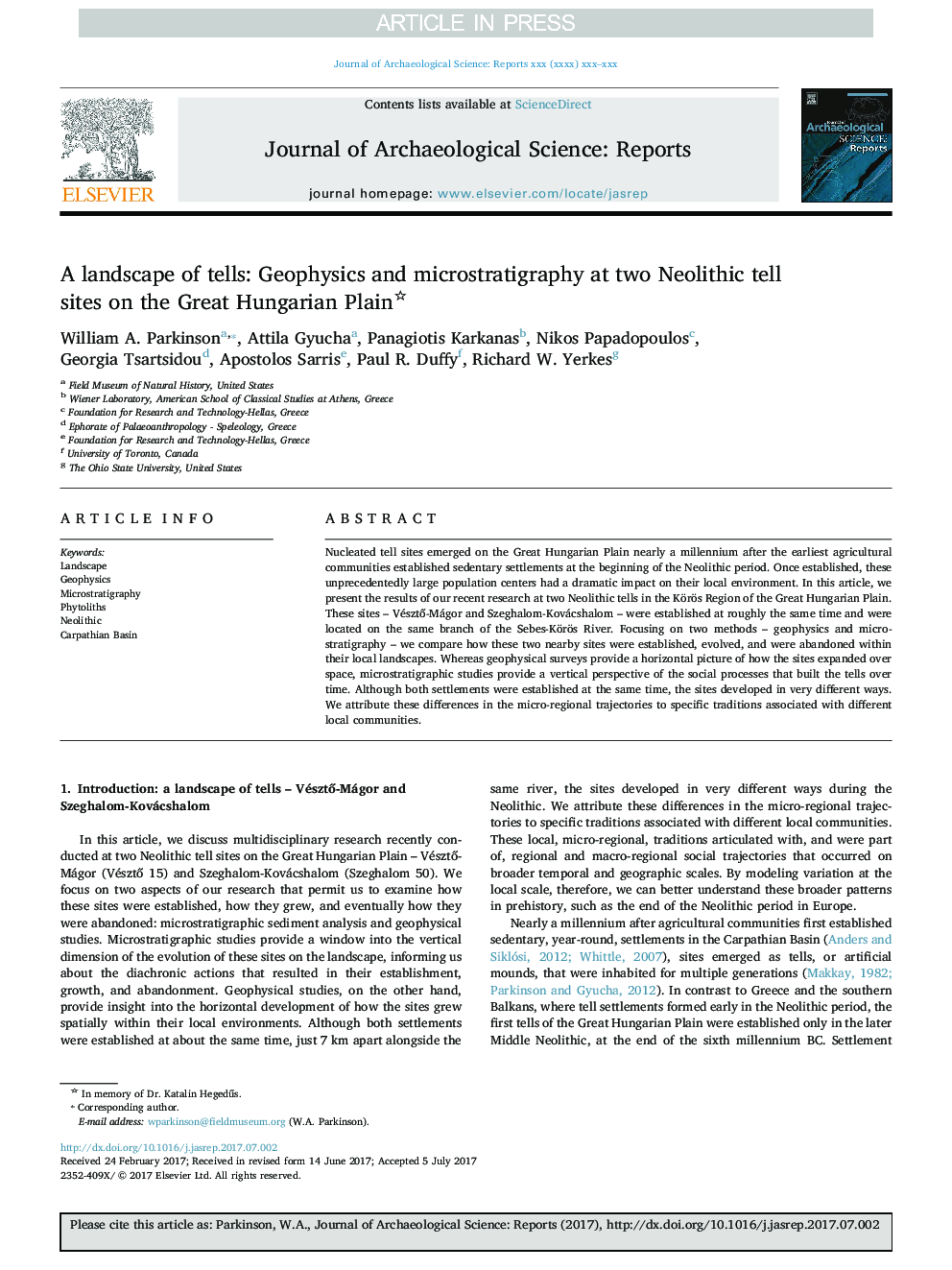| Article ID | Journal | Published Year | Pages | File Type |
|---|---|---|---|---|
| 7444317 | Journal of Archaeological Science: Reports | 2018 | 22 Pages |
Abstract
Nucleated tell sites emerged on the Great Hungarian Plain nearly a millennium after the earliest agricultural communities established sedentary settlements at the beginning of the Neolithic period. Once established, these unprecedentedly large population centers had a dramatic impact on their local environment. In this article, we present the results of our recent research at two Neolithic tells in the Körös Region of the Great Hungarian Plain. These sites - VésztÅ-Mágor and Szeghalom-Kovácshalom - were established at roughly the same time and were located on the same branch of the Sebes-Körös River. Focusing on two methods - geophysics and microstratigraphy - we compare how these two nearby sites were established, evolved, and were abandoned within their local landscapes. Whereas geophysical surveys provide a horizontal picture of how the sites expanded over space, microstratigraphic studies provide a vertical perspective of the social processes that built the tells over time. Although both settlements were established at the same time, the sites developed in very different ways. We attribute these differences in the micro-regional trajectories to specific traditions associated with different local communities.
Related Topics
Social Sciences and Humanities
Arts and Humanities
History
Authors
William A. Parkinson, Attila Gyucha, Panagiotis Karkanas, Nikos Papadopoulos, Georgia Tsartsidou, Apostolos Sarris, Paul R. Duffy, Richard W. Yerkes,
